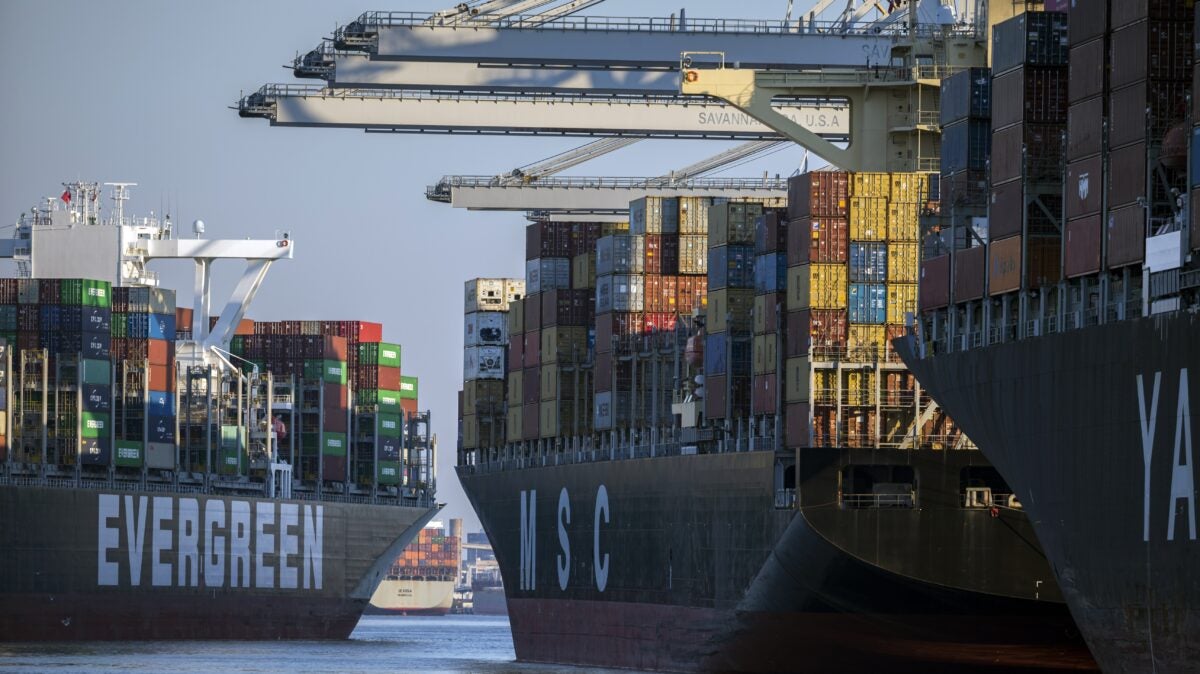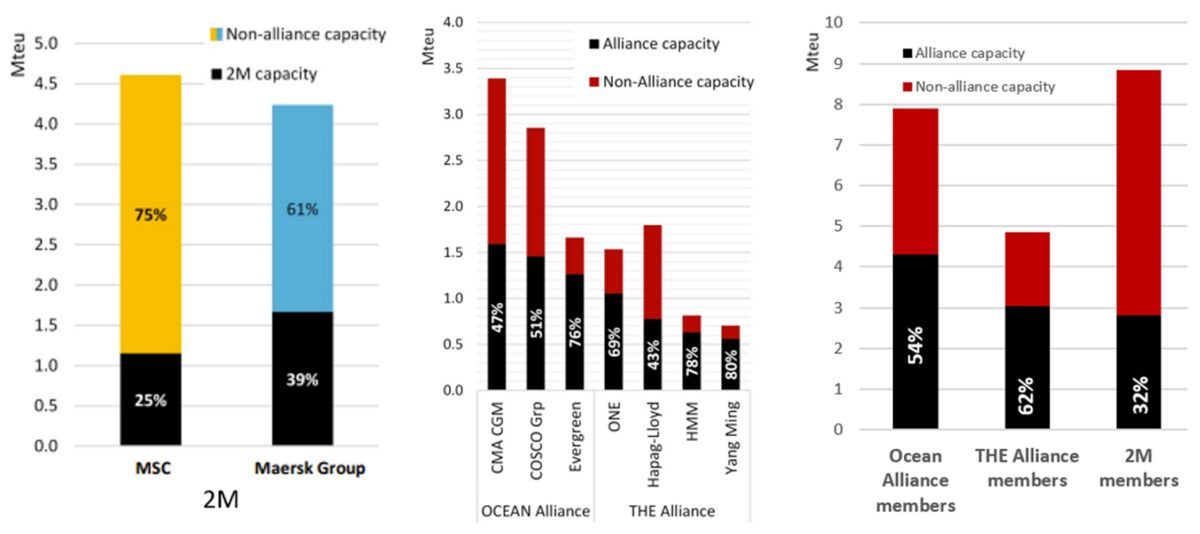Top 9 carriers control 83% of capacity, but the 3 alliances control only 39%
Greg Miller·Wednesday, February 01, 2023

Listen to this article0:00 / 5:431XBeyondWords
The world’s top two container lines — Switzerland’s MSC and Denmark’s Maersk — have cooperated since 2015 in the 2M alliance, a partnership they will end in 2025. Because MSC and Maersk have the biggest fleets, controlling over a third of all global capacity between them, 2M is the largest alliance, right?
Not so, explained container shipping data provider and analyst Alphaliner. “The picture can be deceiving,” it said.
The three global alliances — 2M, Ocean Alliance and THE Alliance — cover the major east-west trades (Asia-U.S., Asia-Europe, Europe-U.S.) and 2M is actually the smallest of the three.
Alliances are multiyear vessel-sharing agreements approved by regulators that allow carrier members to offer joint services and cooperate on capacity management. Shipping lines only dedicate a portion of their ships to alliances. The remainder are used for north-south trades, intra-Asia service and other routes.
The membership of the three alliances comprises the world’s top nine liner operators. These nine carriers control 83% of the global capacity between them. Yet the capacity these nine carriers dedicate to the three alliances represents a much smaller share: 39%.
2M capacity
MSC has total fleet capacity of 4.63 million twenty-foot equivalent units. But it only contributes 25% of that (1.15 million TEUs) to 2M, according to Alphaliner. That is the smallest share, by far, of alliance capacity of any of the nine carriers involved in the three groups.
Maersk has total capacity of 4.23 million TEUs, with 39% in 2M (1.66M TEUs).
Total 2M capacity is 2.82 million TEUs. That’s only 11% of global capacity, a much lower share than the overall combined MSC-Maersk fleets (34%).
Ocean Alliance capacity
It is also significantly lower than capacity in the biggest shipping alliance: the Ocean Alliance, whose members are France’s CMA CGM, the world’s third-largest liner operator; China’s Cosco, the fourth largest (including subsidiary OOCL); and Taiwan’s Evergreen, the sixth largest.
The Ocean Alliance has total capacity of 4.3 million TEUs, 52% more than 2M. Ocean Alliance capacity accounts for 16% of global fleet capacity.
Its members are individually smaller than Maersk and MSC, but they deploy much more of their capacity within the alliance. CMA CGM and Cosco have around half their capacity in the Ocean Alliance, Evergreen at three-quarters.
THE Alliance capacity
The second largest global shipping alliance is THE Alliance, the partnership between Japan’s ONE (the world’s seventh-largest carrier), Germany’s Hapag-Lloyd (No. 5), South Korea’s HMM (No. 8) and Taiwan’s Yang Ming (No. 9).
While the members of THE Alliance are smaller individually than those in the Ocean Alliance, they contribute even more of their fleets to the strategic agreement. Yang Ming has 80% of its capacity in alliance services, HMM 78%, ONE 69% and Hapag-Lloyd 43%, according to Alphaliner.
The combined deployed capacity in THE Alliance, 3.03 million TEUs, represents 12% of global capacity.

What’s next for alliances?
Speculation has been swirling about whether the recently announced breakup of 2M will lead to or coincide with changes in the other two alliances.
Alphaliner believes MSC will go it alone and does not need to join another alliance, given its massive orderbook and unprecedented buying spree in the secondhand market.
“The key question remains whether Maersk will try to build a new alliance around itself or not,” it said. “Unlike MSC, whose fleet could swell to 6 million TEUs in the coming years, Maersk might not have the necessary scale to go it alone.”
Maersk told Alphaliner it will not seek to set up a new alliance to replace 2M. Instead, it “plans to run a stand-alone network on key trade lanes,” Alphaliner reported Tuesday.
Nevertheless, Alphaliner cited two theoretical alliance possibilities: Maersk could join THE Alliance, or it could team up with CMA CGM if the French carrier left the Ocean Alliance.
CMA CGM has LNG- and methanol-fueled newbuildings in line with Maersk’s methanol-fuel strategy. In addition, there are geopolitical risks to the Ocean Alliance.
“CMA CGM … could be afraid that the group will be dominated by China or that geopolitical tensions — with Cosco being from mainland China, OOCL from Hong Kong and Evergreen from Taiwan — could spill over into the alliance’s day-to-day operations,” noted Alphaliner.
If Maersk stays out of new formal alliances, which Alphaliner believes is the most likely scenario, Maersk could cooperate on a non-alliance basis with Zim (NYSE: ZIM), which currently does joint North American services with 2M. The analyst noted that Zim’s LNG-powered newbuilds “would be a good match” for Maersk.

Can you be more specific about the content of your article? After reading it, I still have some doubts. Hope you can help me.
Can you be more specific about the content of your article? After reading it, I still have some doubts. Hope you can help me.